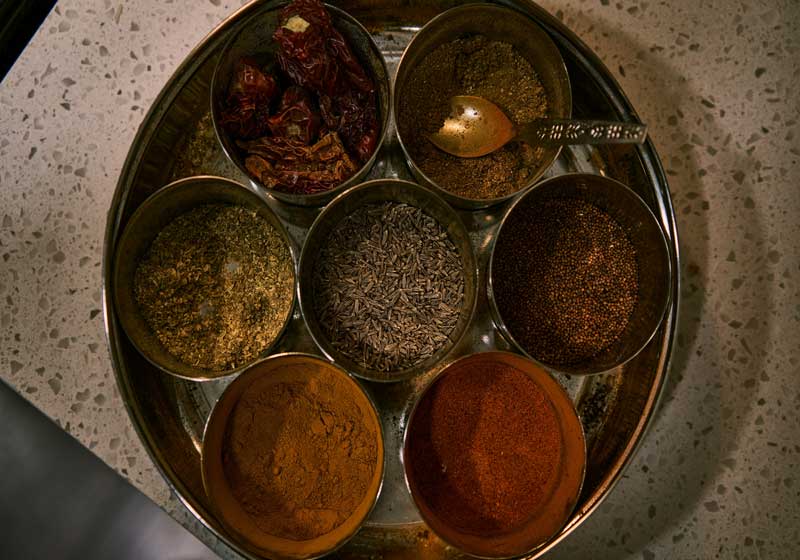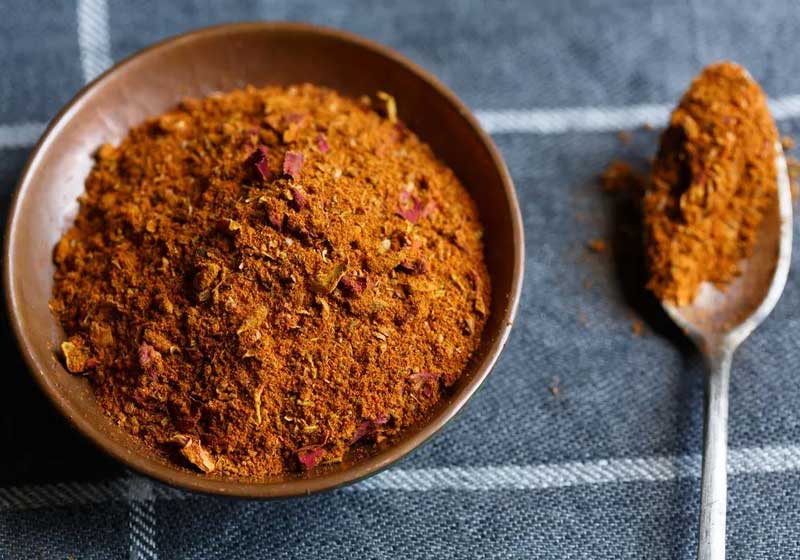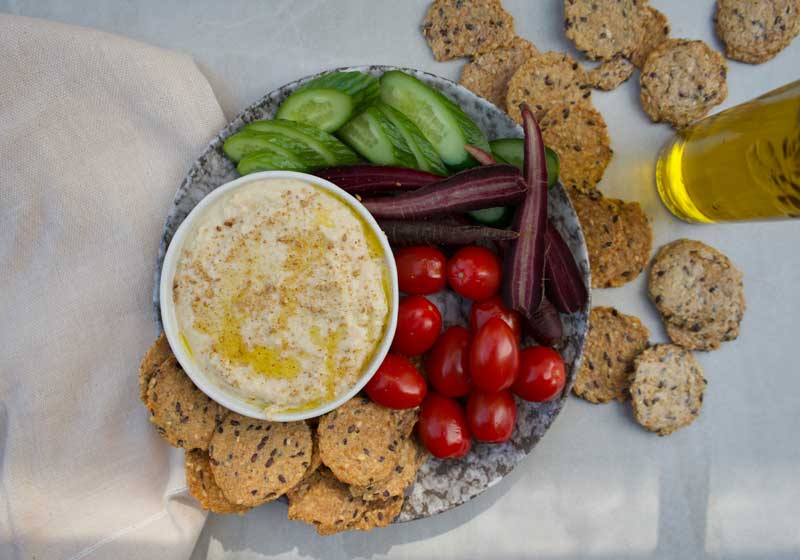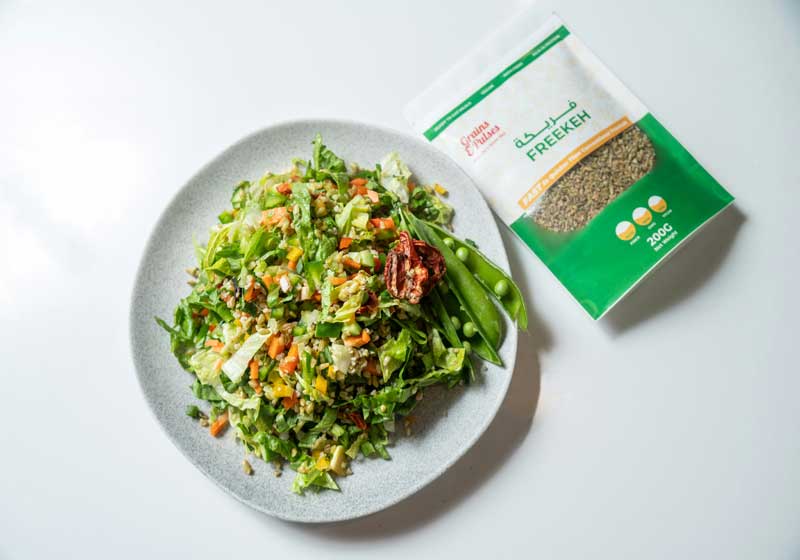By Marie-Antoinette Issa.
Middle Eastern cooking doesn’t require elaborate ingredients. However, a stash of tried-and-tested pantry staples that build flavour in every dish is non-negotiable. Add these spices, sauces and soul-warming stocks to your grocery shopping list and transform the tastes of your home cooking from simple to straight from the souk.

Spice and all things nice
Middle Eastern food is all about layering flavour and the perfect balance of warmth, depth and aroma. So, if you only do one thing to upgrade your kitchen, start with your spice rack.
- Cumin - earthy, warm and slightly smoky, cumin is the backbone of countless Middle Eastern dishes. Whether ground to sprinkle into spiced meat rubs, stirred into fragrant rice pilaf or folded into crispy falafel batter, cumin adds an unmistakable depth and rustic charm.
- Sumac - this is a deep purple powder made from dried, crushed berries. It delivers a tangy, lemony punch that’s less sharp than fresh lemon but more complex and aromatic. It’s the secret zing in salads like fattoush, a flavourful, finishing touch on grilled meats and a zingy twist in dips and dressings.

- Cinnamon & Allspice - far from just a simple, sweet dessert spice, cinnamon’s warm, fragrant notes also make it a cornerstone of Middle Eastern savoury cooking. Its sweet woodiness comes together beautifully in lamb kofta, stuffed vegetables and slow-cooked stews.
- Cardamom & Cloves - these two spices are the heavy hitters of Middle Eastern aromatic cooking. Cardamom pods offer a sweet, floral perfume; while cloves bring intense warmth and depth. Used sparingly, they enrich stews, aromatic rice dishes and even traditional Arabic coffee, adding a luxurious scent that lingers on the palate.
- Dried Mint - mint, dried and crushed, releases a cool, refreshing aroma that’s surprisingly versatile. It’s sprinkled over cooling yoghurt
Spicy shortcuts
Opt for seasonings that do double duty, by adding these complex combinations to your spice cupboard.
- Za’atar - this is a herby, nutty blend of dried thyme, sumac, sesame seeds and oregano or marjoram. It’s a versatile seasoning sprinkled over flatbreads, mixed into olive oil for dipping or dusted on roasted vegetables. The balance of tangy, savoury and nutty flavours makes za’atar an instant flavour booster in any kitchen.
- Seven Spice (Baharat Lebnani) - Lebanese seven spice is a fragrant blend that perfectly balances sweet, spicy and savoury notes. Traditionally, it includes cinnamon, allspice, black pepper, cumin, coriander, cloves and nutmeg. It’s a star seasoning for grilled meats, roasted veggies, hearty stews and even some breads - bringing complexity and a whisper of Middle Eastern magic with every pinch.

- Ras el Hanout - this North African spice blend is the Middle East’s complex cousin to garam masala. Often containing a dozen or more spices, from cardamom to dried rosebuds, cinnamon to chilli flakes, ras el hanout layers dishes with exotic warmth and subtle heat.
Straight to the sauce
The right sauces and pastes will give your cooking unmistakable Arabic-inspired authenticity and depth.
- Pomegranate Molasses - thick, tangy and sweet, pomegranate molasses is a game-changer in Middle Eastern cooking. Made by reducing pomegranate juice into a syrupy concentrate, it adds a vibrant tartness that wakes up salads, marinades, and stews alike.
- Tahini - this smooth sesame seed paste goes way beyond hummus. Rich, nutty and slightly bitter, it’s the base for sauces, dressings and even desserts like halva. Whisk it with lemon juice, garlic and water for a silky sauce, or dollop it on roasted veggies - its creamy texture and deep flavour make it indispensable.

- Harissa - this is a fiery North African chilli paste with smoky undertones and vibrant spices like cumin, coriander and garlic. It brings heat and depth to couscous, stews and grilled meats, with a complexity that’s more smoky than spicy.
- Amba - this is a tangy, pickled mango condiment with roots in Iraqi and Israeli cuisines. Bursting with sweet, sour and mildly spicy notes, it’s typically served with falafel and grilled meats (but is also particularly popular in the egg sandwiches of Baghdad).
The Grain Game
No Middle Eastern pantry is complete without a stash of hearty, wholesome grains. Use them to form the base of salads, stuff vegetables or soak up slow-cooked sauces.
- Burghul - burghul, or bulgur, is cracked wheat that’s partially cooked, then dried and cracked again. It cooks quickly and has a pleasant, nutty flavour with a slightly chewy texture. It’s the star grain in tabouli salad, kibbeh meatballs and warm pilafs, adding a wholesome body and a subtle crunch.
- Freekeh - this is young green wheat that’s roasted and dried, giving it a unique smoky flavour and chewy texture. High in protein and fibre, it’s often used in soups, salads or as a stuffing grain. Its slightly nutty, smoky taste adds a wonderful depth to dishes and a nutritious punch.

- Couscous - this tiny steamed semolina grain is a quick-cooking staple across North Africa and the Middle East. Whether you use the fine Moroccan-style or the larger pearl couscous (maftoul), it absorbs flavours beautifully and makes a perfect base for saucy stews, spiced vegetables or grilled meats.
- Rice - long-grain rice varieties like basmati and jasmine are commonly used, often cooked with fragrant spices such as cinnamon sticks, cardamom pods, cloves, or toasted vermicelli noodles. Middle Eastern rice is never just plain - it’s perfumed and fluffy, a delicate partner to rich stews and tagines.
- Lentils - though technically a legume, lentils are pantry royalty in Middle Eastern kitchens. Red lentils break down into silky soups, while green and brown varieties hold their shape for hearty stews and classic dishes like mujadara - a comforting lentil and rice dish.









